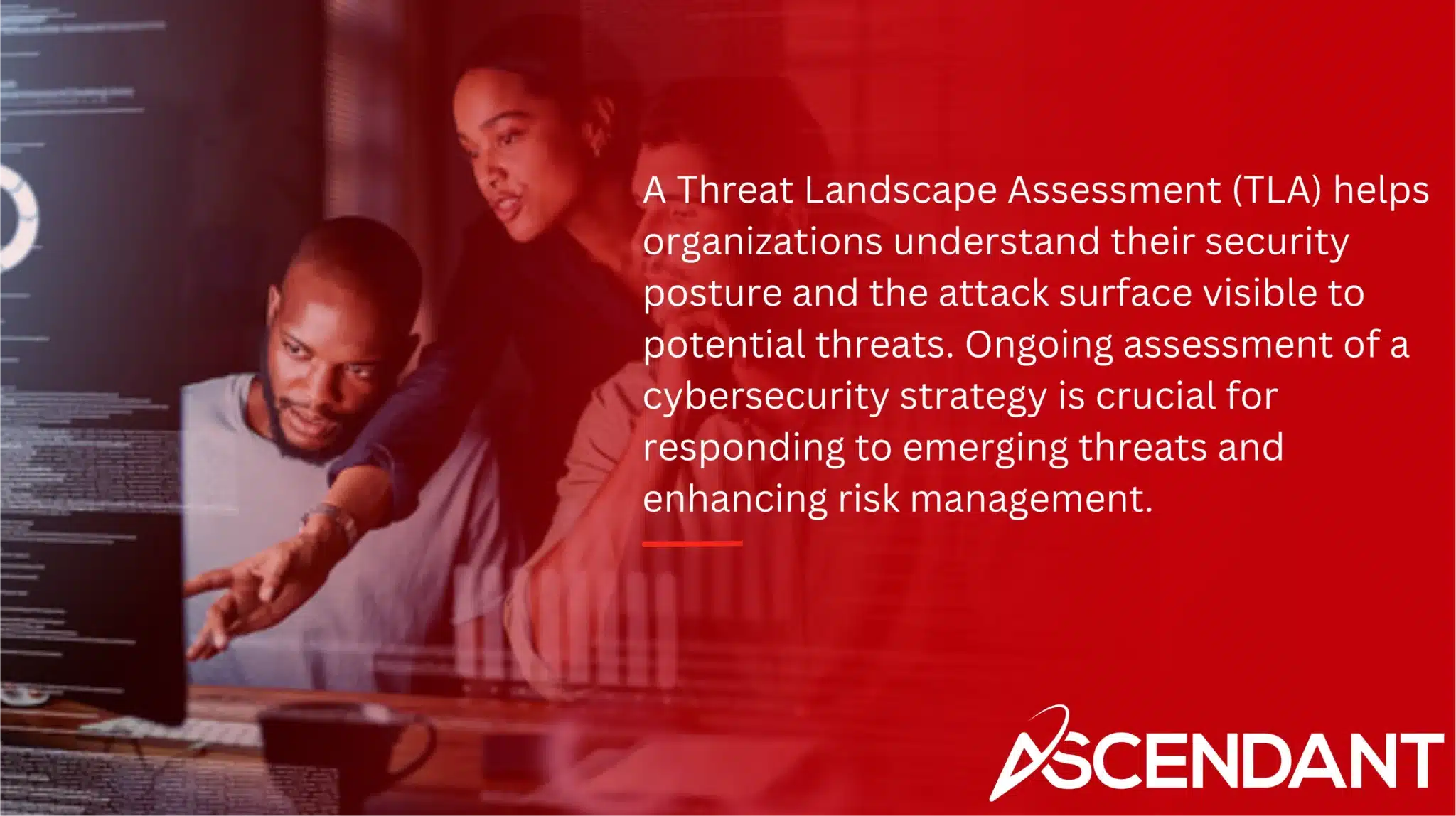Worried about cyber threats? A strong cyber security strategy is crucial for safeguarding your digital assets. This article explains what a cyber security strategy is, why you need one, and how to create an effective plan. We’ll cover best practices, essential elements, and ways to keep your strategy updated. Dive in to learn more.
In This Article:
- Understanding Cyber Security Strategy
- Assessing Your Cyber Threat Landscape
- Developing a Tailored Cyber Security Strategy
- Implementing Effective Security Measures
- Monitoring and Adapting Your Cyber Security Strategy
- Building a Culture of Security Awareness
Key Takeaways
- A comprehensive cybersecurity strategy is essential for protecting digital assets against evolving cyber threats, requiring continuous assessment and adaptation.
- Key elements of an effective cybersecurity strategy include proactive threat prevention measures and adherence to compliance standards that align with business objectives.
- Building a culture of security awareness through regular training and communication fosters employee engagement and strengthens organizational defenses against cyber threats.
Understanding Cyber Security Strategy
Implementing a cybersecurity strategy goes beyond establishing basic protocols. It’s about creating an all-encompassing framework aimed at defending digital resources and sensitive information against the myriad of cyber threats. The foremost objective is to fortify assets to thwart potential cyber attacks, which becomes ever more essential as these threats multiply, ensuring risk management, system integrity preservation, and protection of confidential data.
The significance of having a solid cybersecurity plan in place is critical – it not only bolsters the competitive edge for businesses, but also serves as a continuous requirement that must progress and adapt alongside changes within both the organization itself and its external environment. By understanding the evolving landscape of cyber threat actors and evaluating an organization’s current state of security preparedness, valuable insights can be gained into how best to refine a security strategy capable of addressing precise vulnerabilities.
Why Cyber Security Strategies Are Essential
The cyber threat landscape is constantly evolving, with new security threats such as ransomware and identity theft becoming increasingly common. Organizations should be aware of future trends, including rising ransomware threats and supply chain vulnerabilities. Current prevalent threats include ransomware, malware, phishing, and insider threats.
Compliance with data security regulations such as HIPAA, PCI DSS, and GDPR mandates effective security practices for compliant data handling. Frameworks like the NIST Cybersecurity Framework and CIS Top 20 Controls provide structured guidelines to align security strategies with regulations.
A well-crafted cybersecurity strategy helps oversee cybersecurity efforts and protect against emerging threats.
Key Elements of a Cyber Security Strategy
An all-encompassing cybersecurity strategy tackles multiple aspects of cyber risks, centering on the active prevention of threats. Essential tactics entail:
- Approving only trusted applications
- Updating and fixing application vulnerabilities
- Adjusting settings for Microsoft Office macros to bolster security
- Strengthen user application defenses
- Limitation of administrative access rights
- Applying updates to operating systems regularly
- Enforcing Multi-Factor Authentication (MFA)
Technologies dedicated to threat detection are vital in spotting and addressing attacks that might breach the first layer of protection. When these components are integrated, organizations can forge a strong cybersecurity framework that lessens risks while advancing their overall level of security maturity.
Assessing Your Cyber Threat Landscape
Understanding your organization’s unique cyber threat landscape is crucial. This landscape includes factors such as industry, location, infrastructure, and data exposure that impact potential threats. Factors such as cloud-based infrastructure, connected IoT systems, and the availability of data on the Internet and Dark Web also influence the threat landscape.

A Threat Landscape Assessment (TLA) helps organizations understand their security posture and the attack surface visible to potential threats. Ongoing assessment of a cybersecurity strategy is crucial for responding to emerging threats and enhancing risk management.
The stages in developing a cybersecurity strategy include identifying and evaluating threats, identifying countermeasures, and developing a coherent strategy.
Identifying Potential Threats
Commencing with an evaluation of the cyber threat environment requires recognizing possible threats. The recent surge in ransomware attacks and weaknesses across supply chains stand out as rising cyber threats. In light of this current landscape, organizations should make it a priority to implement defenses against anti-ransomware.
Grasping these threats equips organizations to adapt their defensive measures effectively. By pinpointing and giving precedence to potential risks, enterprises can forge a cybersecurity strategy that is not only more concentrated but also efficient in addressing paramount dangers.
Evaluating Current Security Posture
Understanding an organization’s current level of security maturity and its willingness to take on risk is key in assessing its overall security posture. Employing tools such as vulnerability analysis plays a significant role in this assessment process.
Regular audits are vital for organizations to pinpoint potential weaknesses within their security framework and maintain adherence to regulatory requirements. These audits can reveal previously unnoticed vulnerabilities, confirming that the organization’s security measures remain contemporary and effective.
Developing a Tailored Cyber Security Strategy
Developing a cybersecurity strategy customized for your organization is crucial in meeting its specific security requirements and confronting unique threats. Acknowledging the distinct challenges faced by businesses of varying sizes, especially small businesses, offers valuable perspective that enhances the efficacy of any security approach. The formulation of a solid cybersecurity plan necessitates harmonizing security objectives with the broader aims of the business.
During the formative phase of crafting a cybersecurity strategy, it’s important to define clear goals, pinpoint essential assets, and evaluate potential vulnerabilities as well as imminent cyber threats. This step is fundamental in devising a bespoke plan that ensures robust protection for an organization’s operational framework.
Cultivating an organizational environment where security awareness is prevalent equips staff members with not just knowledge but also motivation to actively participate in defending against attacks on company resources.
Setting Strategic Security Goals
Cybersecurity strategies ought to be tailored, taking into account the business’s scale, its risk exposure, and the resources it can allocate. The distinction in cybersecurity tactics between larger corporations and smaller enterprises primarily lies in the extent of their operations that inform their strategic objectives. Implementing role-based access controls plays a pivotal role in bolstering security awareness among staff by highlighting the significance of each individual’s access privileges.
Having definitive and practical security goals is crucial for improving security operations while also ensuring they are synchronized with broader business strategies.
Creating a Risk Management Plan
A risk management plan addresses vulnerabilities and reduces risks. Key components include risk assessments, cybersecurity plans, policies, guidelines, and procedures. Active participation in documenting the strategy ensures involvement and acceptance of responsibilities.
Organizations must prepare to rethink their cybersecurity strategy if a significant new threat arises. Selecting cybersecurity improvements requires considering the pros and cons of each option to effectively manage risks.
Implementing Effective Security Measures
Protecting digital assets and ensuring business continuity require the implementation of robust security measures. Regular penetration testing should be an integral part of a thorough cybersecurity strategy that focuses on both preventing identified threats and safeguarding against them.
For implementing standards in cybersecurity, it is recommended to adopt a preventative mindset. Cultivating a cybersecurity culture within an organization significantly bolsters its resilience to various security threats.
Leveraging Security Benchmarks and Compliance Standards
Adhering to regulatory standards bolsters the efficacy of security measures through the establishment of systematic directives. The amalgamation of various compliance frameworks frequently presents obstacles for organizations, stemming from their intricate nature. Streamlining this complexity can be achieved by focusing on a primary framework and correlating its stipulations with those of additional frameworks, thereby eliminating unnecessary duplication.
The CIS Critical Security Controls define prioritized steps that bolster organizational defenses against prevalent cyber threats. CIS Benchmarks deliver comprehensive instructions tailored to individual technologies which aid organizations in executing these security controls precisely, ensuring even critical systems are adequately protected.
Utilizing Multiple Tools for Defense
Utilizing a range of security tools enhances protection from the myriad of cyber threats. By adopting a layered approach to security, organizations can combine different instruments that target various weaknesses for effective defense. Integrated use of varied security resources improves both surveillance and management capabilities.
By deploying an array of tools, organizations are able to establish robust defenses against the spectrum of cyber threats they face.
Monitoring and Adapting Your Cyber Security Strategy
Ongoing surveillance is a critical aspect of detecting vulnerabilities and immediate threats in the cybersecurity framework of an organization. The constant appraisal of cybersecurity strategies enables organizations to react efficiently to new risks.
Persistent review is vital for an effective response to shifts within the landscape of cybersecurity.
Regular Security Audits and Reviews
Regular evaluations of existing security protocols through systematic audits are crucial to pinpoint potential weaknesses and assess the robustness of such measures. These periodic assessments not only assist organizations in adhering to legal compliance standards, but also show a proactive approach towards mitigating online threats.
Employing recognized benchmarks and engaging relevant parties throughout the audit process guarantees comprehensive scrutiny. The careful recording of outcomes, coupled with the implementation of a structured timetable for subsequent reviews, promotes responsibility and fosters an environment geared toward ongoing enhancement in security practices.
Adapting to New Threats
Organizations need to be ready to update their cybersecurity strategies swiftly as new significant threats surface. Continuously adapting security strategies and practices is an effective way to tackle the evolution of these threats.
Consistently updating security measures enables organizations to remain proactive against emerging threats, thereby upholding a strong stance on cybersecurity.
Building a Culture of Security Awareness
Fostering a culture of security awareness within an organization is crucial for improving its cybersecurity maturity. When leadership takes an active role in cybersecurity efforts, it underscores the significance of security across every level of the organization.
The endorsement and involvement from leadership are essential to nurture a pervasive culture of security awareness throughout the entire organization.
Employee Training Programs
Employees are taught to identify and adhere to security best practices, as well as recognize potential insider threats through ongoing training programs. Training centered on raising security awareness ensures that personnel make full use of technological protections against cyber threats.
Effective mitigation and identification of insider threats can be achieved by equipping employees during instructional sessions. By incorporating cybersecurity education into the induction process, new staff members become acquainted with security measures from the outset.
Preparation given in security training enables employees to detect and effectively counter social engineering attacks.
Promoting Security Awareness
Communication campaigns are vital for keeping security awareness at the forefront of employees’ minds. Using engaging communication campaigns increases awareness and encourages proactive security behaviors among staff. Ongoing communication campaigns can reinforce security awareness and encourage employees to adopt safe practices.
Promoting a culture where employees feel safe reporting suspicious activities can lead to quicker threat detection.
Summary
In essence, creating a successful cybersecurity strategy requires organizations to gain insight into the evolving cyber threat environment and assess their existing security maturity. Establishing clear strategic objectives for security and rolling out comprehensive security measures are fundamental steps in this process. Continual vigilance and adjusting to emerging threats play a critical role in preserving an organization’s level of security preparedness. It is also vital that organizations cultivate a climate of heightened security awareness by consistently providing training and updates to employees, enabling them to contribute actively towards the organization’s defense mechanisms. Adhering to these best practices allows organizations not only to strengthen their cybersecurity endeavors, but also defend themselves against the constantly changing landscape of digital threats.
 Frequently Asked Questions
Frequently Asked Questions
Why is a cybersecurity strategy essential for my business?
A cybersecurity strategy is essential for your business as it mitigates risks, protects sensitive data, and ensures system integrity, thus preserving business continuity and competitiveness.
Prioritizing cybersecurity safeguards your organization’s future.
What are some key elements of an effective cybersecurity strategy?
To safeguard your systems effectively, a robust cybersecurity strategy must incorporate elements such as threat prevention, whitelisting of applications, management of patches, hardening against user application vulnerabilities, limitation of administrative privileges and the implementation of multi-factor authentication (MFA).
Focusing on these components will markedly bolster the security stance of your organization.
How can I identify potential cyber threats to my organization?
Conducting a Threat Landscape Assessment (TLA) and staying updated on emerging threats, like ransomware and supply chain vulnerabilities, are essential for identifying potential cyber threats to your organization.
These proactive measures will help you better prepare and respond to cyber risks.
What role do regular security audits play in a cybersecurity strategy?
Regular security audits are essential in a cybersecurity strategy as they assess the effectiveness of existing measures, identify vulnerabilities, and ensure compliance.
This continuous evaluation promotes ongoing improvement and strengthens overall security posture.
How can I build a culture of security awareness in my organization?
To build a culture of security awareness in your organization, ensure active leadership involvement, implement regular training programs, and create engaging communication campaigns.
This approach will effectively enhance security awareness among employees.

